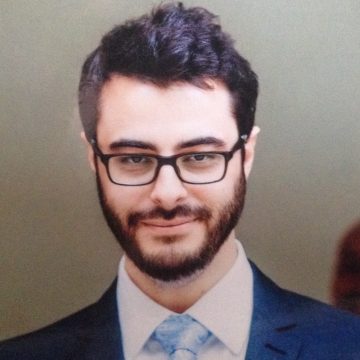
Information/AI
Paul Expert
Visiting Associate Professor
Complex SystemsComplex NetworksTopological Data AnalysisSpatio-Temporal PatternsNeurosciencePublic Health
Biography
Dr. Expert studied Physics (BSc and MSc) and then Statistics (MSc) at the University of Geneva and received his PhD in Physics from Imperial College London in the Complexity and Networks Group under the supervision of Prof. Kim Christensen. His thesis work made use of statistical mechanics and complex network approaches to study various systems from the human brain to human interactions.
As a post doctoral researcher with Prof. Federico Turkheimer in the Center for Neuroimaging Sciences at King's College London, he continued to develop novel network based analysis methods and pioneered the use of persistent homology approaches to characterise altered states of consciousness.
He then came back to Imperial to join the EPSRC Centre for Mathematics of Precision Healthcare (CMPH), to work with Prof. Mauricio Barahona to develop graph spectral based methods in machine learning and persistent homology and his own line of research in temporal graph signal analysis.
He is currently part of the Global Digital Health Unit, at Imperial College London, where he uses topology based methods to represent and analyse Electronic Health Records to map patient movements in hospital and computational epidemiology approaches to propose mitigation strategies against nosocomial infections spreading in general and covid-19 in particular. He is also interested characterising the space of patient clinical trajectories extracted from Electronic Health Records to help predict patient deterioration and outcomes.
Expectations for WRHI
I am extremely excited to join the World Research Hub Institute and collaborate with Prof Takayasu Misako on human mobility and epidemiology problems. The new Risk Management of
Complex Systems Satellite Lab is a timely addition to WRHI and brings together world leading scientists in complex systems and champions the fundamentally interdisciplinary approach to societal problems that I am passionate about. I have a long history of collaborations with Japanese researchers and I’m convinced this appointment will be an opportunity to strengthen existing collaborations and create new ones.
| 2020-Present | Visiting Associate Professor, Institute of Innovative Research, Tokyo Institute of Technology |
|---|---|
| 2019-present | Research Associate, Global Digital Health Unit, School of Public Health, Imperial College London |
| 2017-2019 | Research Associate, Centre for Mathematics of Precision Healthcare, Department of Mathematics, Imperial College London |
| 2017-2020 | Visiting Researcher, Centre for Neuroimaging Sciences, King’s College London |
| 2012-2017 | Research Associate, Centre for Neuroimaging Sciences, King’s College London |
| 2012-2017 | Visiting Researcher, Centre for Complexity Sciences, Imperial College London |
| 2019 | Sasakawa GB Foundation award, with Dr Takayuki Nozawa, Tokyo Institute of Technology |
|---|
| 2019 | “The plastic adaptation to pathology in psychiatry: are patients with psychiatric disorders pathological experts“, |
|---|---|
| 2019 | “Topological gene-expression networks recapitulate brain anatomy and function“. A Patania, P Selvaggi, M Veronese, O DiPasquale, P Expert, G Petri, Network Neuroscience, 2019 |
| 2019 | “Dynamical exploration of the repertoire of brain networks at rest is modulated by psilocybin“, LD Lord, P Expert, S Atasoy, L Roseman, K Rapuano, R Lambiotte, DJ Nutt, G Deco, RL Carhart-Harris, ML Kringelbach, J Cabral, Neuroimage, 2019 |
| 2019 | “Altered ability to access a clinically relevant control network in patients remitted from major depressive disorder“, C Figueroa, J Cabral, R Mocking, K Rapuano, T van Hartevelt, Gu Deco, P Expert, A Schene, M Kringelbach, H Ruhé, Human Brain Mapping, 2019, |
| 2019 | “Conflicting emergences: Weak vs. strong emergence for the modelling of brain function“, FE Turkheimer, AA Kehagia, P Hellyer, P Expert, LD Lord, J Vohryzek, J De Faria Dafflon, M Brammer, R Leech, Neuroscience and Biobehavioural Review, 2019 |
| 2018 | “Mesolimbic Dopamine Function and Salience Network Connectivity: An Integrative PET and MR Study“, Robert A McCutcheon, Matthew M Noura,Tarik Dahoun, Sameer Jauhar, Fiona Pepper, Paul Expert, Mattia Veronese, Federico Turkheimer, Mitul Mehta, Oliver D Howes, |
| 2017 | “Graph spectral characterization of the XY model on complex networks”, P Expert, S de Nigris, T Takaguchi, R Lambiotte, Physical Review E 96:012312, 2017 |
| 2015 | “Generalised Sandpile Dynamics on Artificial and Real-World Directed Networks”, N. Zachariou*, P. Expert*, M. Takayasu, K. Christensen, PLoS ONE, 10.1371/journal.pone. 0142685, 2015 |
| 2015 | “The brain’s code and its canonical computational motifs. From sensory cortex to the default mode network: A multi-scale model of brain function in health and disease“, F. Turkheimer, R. Leech, P. Expert, LD Lord, AC Vernon, Neuroscience and Biobehavioral Reviews, 55:211, 2015 |
| 2014 | “Homological scaffolds of brain functional networks”, G Petri, P Expert, et al., J. R. Soc. Interface, 11:20140873, 2014 |
| 2014 | “Temporal stability of network partitions”, G Petri, P Expert, Physical Review E, 90:022813, 2014 |
| 2013 | “Traumatic brain injury impairs small-world topology”, AS Pandit, P Expert, et al., Neurology 80(20):1826-1833, 2013 |
| 2011 | “Uncovering space-independent communities in spatial networks”, P Expert, TS Evans, VD Blondel and R Lambiotte, PNAS, 108(19):7663-7668, 2011 |
| 2011 | “Characterization of the anterior cingulate’s role in the at-risk mental state using graph theory”, LD Lord, P Allen, P Expert et al., NeuroImage, 56(3):1531-1539, 2011 |
| 2011 | “Self-similar correlation function in brain resting-state functional magnetic resonance imaging”, P Expert, R Lambiotte et al., J. R. Soc. Interface, 8:472-479, 2011 |
